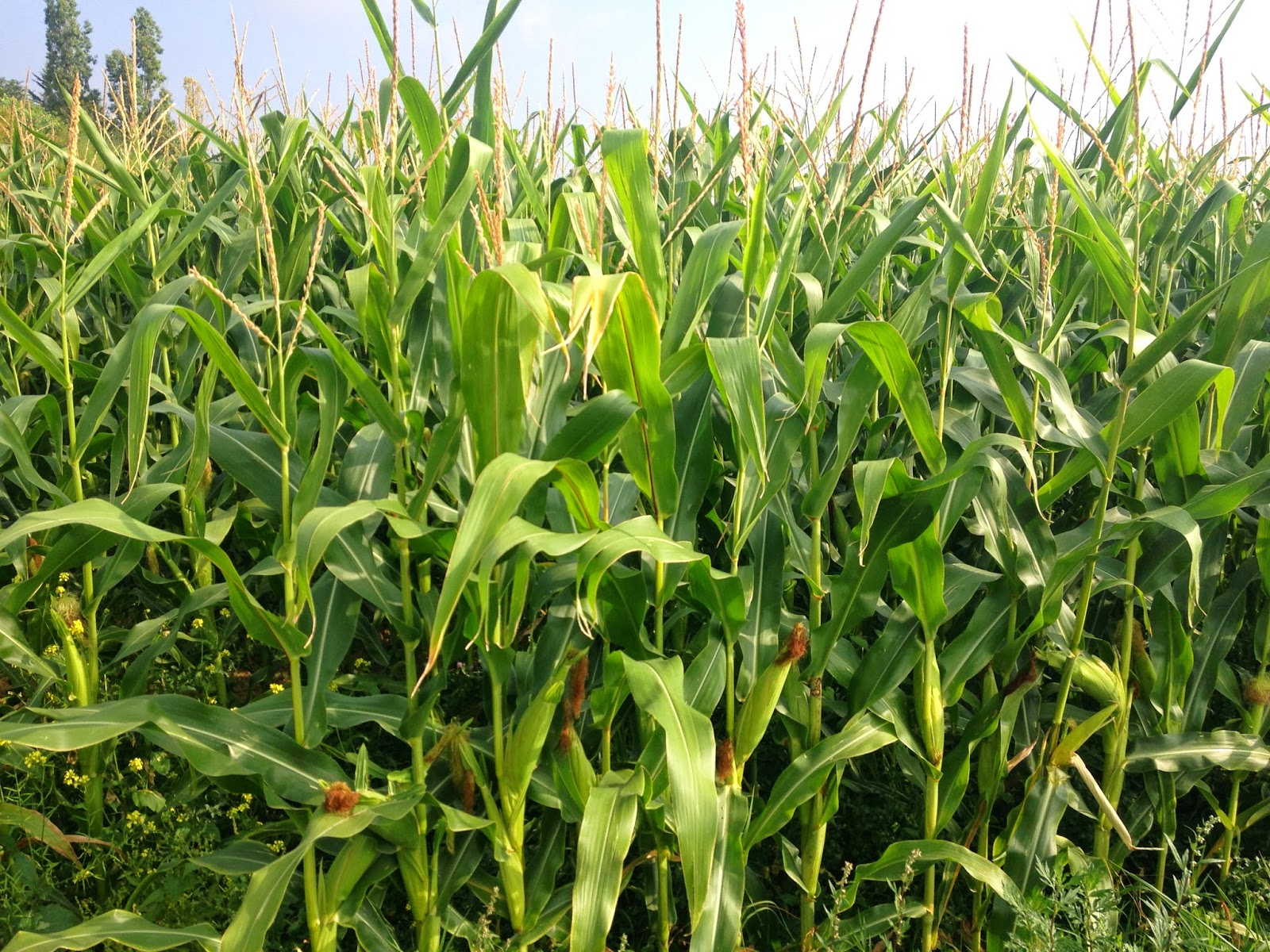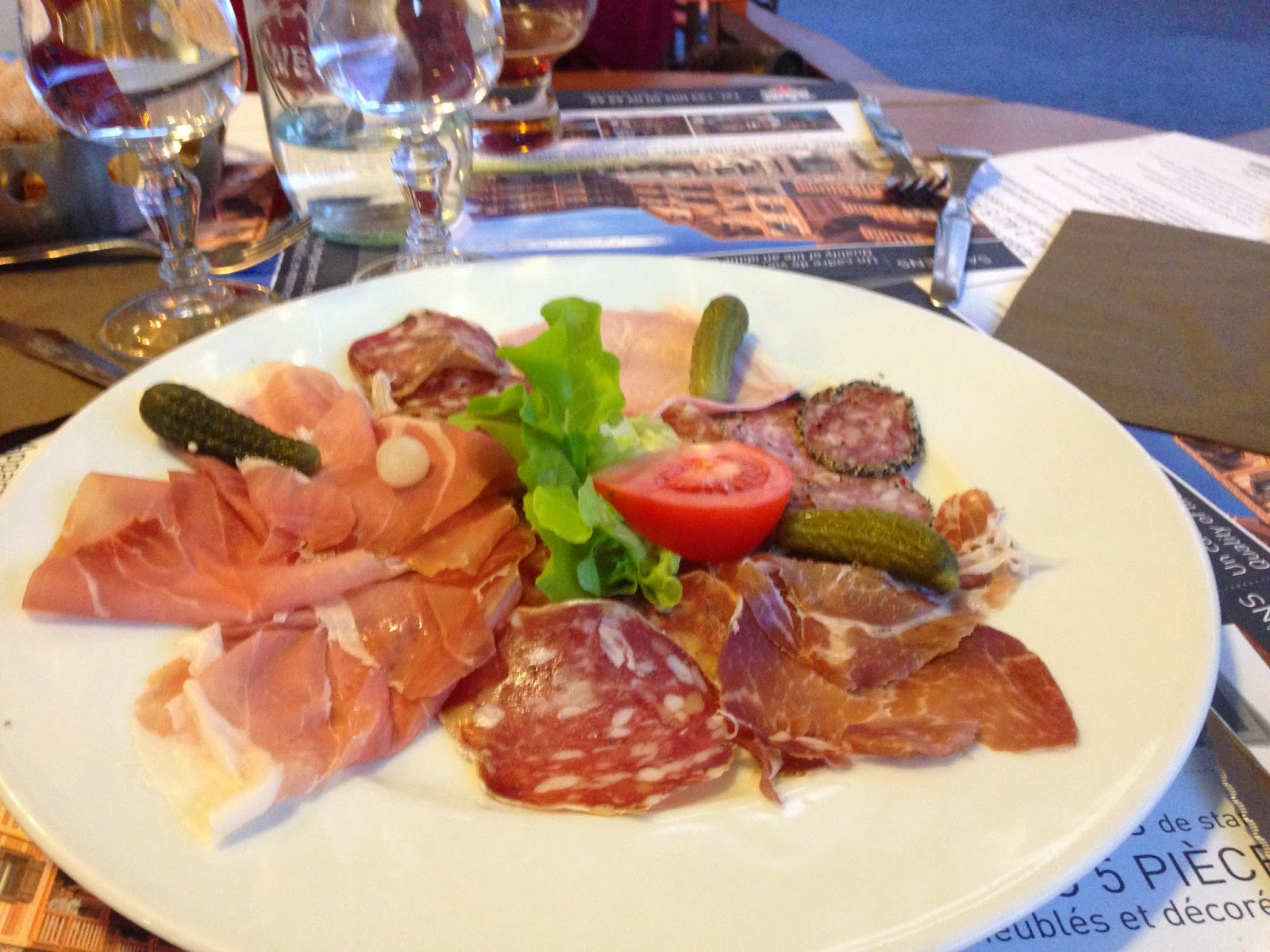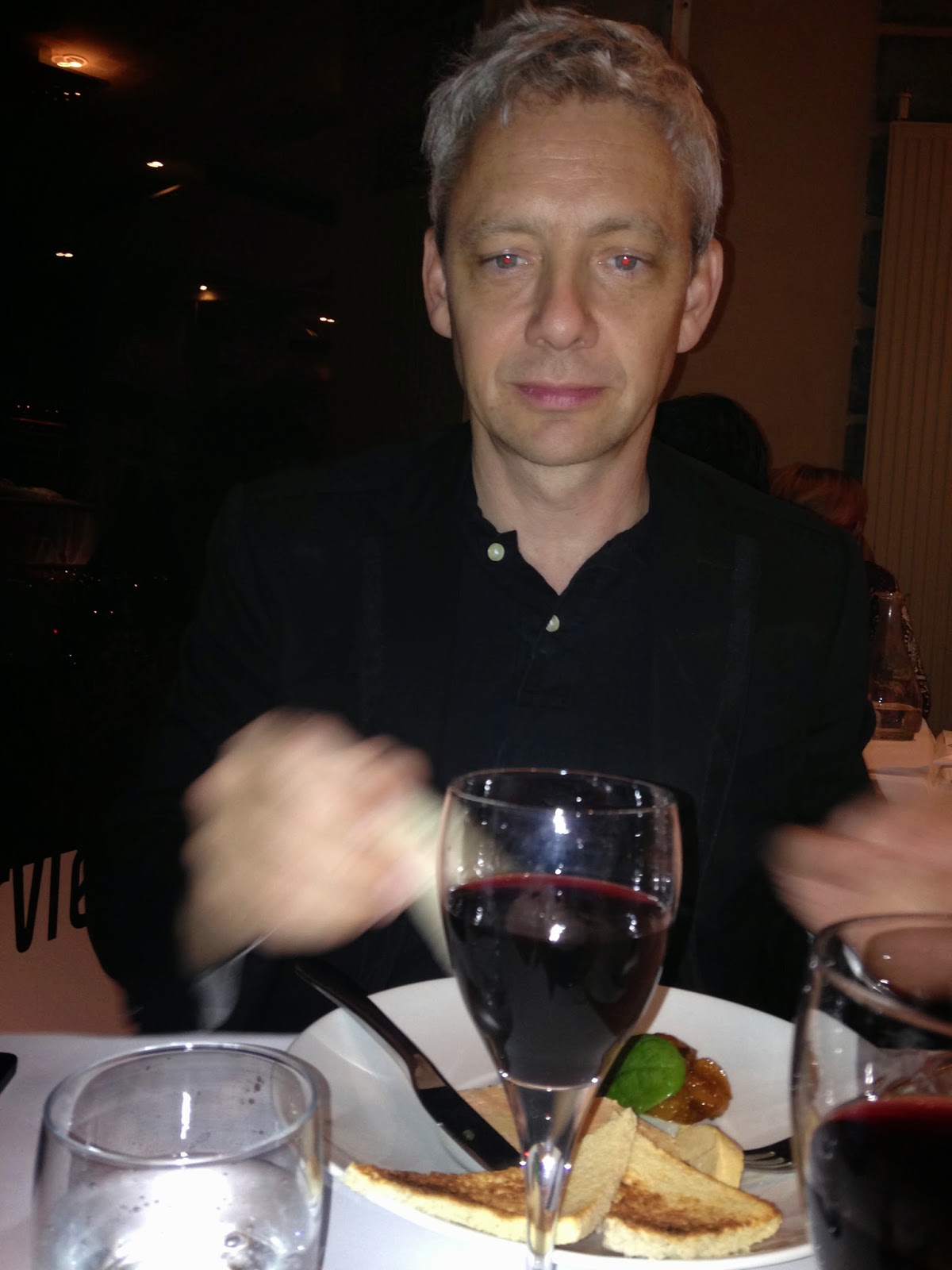It is has been very rainy in the Beaujolais. We are not used to day after day of dreary rain coming the the Western Rockies of the USA. At least it's cold!
Here are some pictures of our compound in the late Fall.
This is our house from the Northeast looking Southwest as you enter from the gate.
This is looking straight North.
Panorama with Aimé and Catherines pad, our pad, and Chez Paul and Maguy!
Well, since it is wet and cold here, this post is going to a) ramble and b) not be as delightful and funny as les posts de Lisa and c) have some food science. Because, who doesn't love food science?
Conceptually, I want to start this theme with a picture from our time in Lake Arrowhead in Southern California before we left. In this blurry photo one can see Micah and a 1/2 ear of corn.
Micah loves vegetables, especially corn. If you don't watch him, he will keep eating vegetables until there is none left, on his plate, on your plate, on the table, in the house...When we were in Lake Arrowhead before trip, Uncle Jon nicknamed Micah the 'Corn Alien' due to his love of corn.
One of the reasons we are here is that my research interests involve determining the role of food chemistry on health, in both humans and animals. In the courses I teach at Utah State I cover some of the history of agriculture. If you know much about corn, you know that it is from the New World (Americas) and was introduced in Europe after Columbus. Corn is very efficient and produces about the most biomass per unit land as any crop. When it was first introduced into Europe it quickly became the staple food of peasants in Italy.
Although our genetic stock is Old World (thanks 23&me (https://www.23andme.com/), we are very New World in appearence and demeanor. We were surprised when we first got to France to see corn everywhere...
On top of the hill behind our house
From the train...
Although the summer is over, some corn is still in the field as of Novermber 8th...
And some has been harvested...
We also found some corn in a treat from our favorite bakery in St. Verand . Jasper got the center corn flake cluster that was very strongly flavored of evaporated milk. Pretty good, though.
This is the crew outside Celine's bakery after a chilly hike in the town of Joux (games). That town had riddles posed all over on small billboards (future post).
One of my research activities at Utah State has been to look at how animal diets affect the fat composition of the meat, milk and eggs that result.
As with my previous travels in Italy, I have found that the French eat A LOT of pork. In Italy it was explained to me that chickens make eggs, cows make milk, but pigs pretty much only make pork. I am very curious to know if the fat composition of the lovely cured pork we are eating reflects a high corn diet.
A fine selection of probably corn-fed, cured pork.
1/2 a rustic corn-fed rustic sausage purchased at the market behind our house.
One interesting aspect of the corn used to feed the animals here (as the grandson of an Ohio corn farmer) is that the corn is all non GMO. Nonetheless, you still see the sorts of small signs by the corn telling you which agribusiness hybrid it is. If you think this is any more 'natural'than a GMO hybrid you should come to Logan and take my class next Fall.
Anyway, the reason I wanted to discuss corn is that we got to see some corn feeding 'up close and personal' in action last week. We visited a foie gras farm. In French, 'foie' means liver, and gras means 'fat'.
Our village is nestled below some rolling hills in the Beaujolais region. On top of the hill behind Anse we visited a farm last Saturday evening. The farm is called La Ferme des Perrelles (http://www.producteurs-fermiers-rhone.com/perrelles/). Here is a map showing its proximity to our house. The farm is where the red circle is, and Chez Ward is circled in green.
We went and visited the farm last week along with a lot of other people. That is because in France, farms often have open houses to show off what they do. Very cool.
They are are inspected for processing and direct sales. They process over 2500 ducks per year. Once the liver is taken it is slow cooked at low heat until it is pink in the center.
They are raised in the fresh air for 3 months without any GMO foods. Then, they are gavaged with corn 2 times per day for 2 weeks.
The ducks did not seem to mind, other than the commotion caused by a lot of kids and noise. According to Olivier, feeding ducks like this mimics the natural process where they load up on calories for their long migrations. Unlike humans, ducks can store a lot of fat in their liver. For humans, fatty liver causes inflammation and in some cases fibrosis and cirrhosis.
Here a normal and a fatty liver are juxtaposed. On the left, the liver is reddish and smaller, whereas a fatty liver is more tan/brown. When it is sliced thin and stained, the fat droplets appear as white spots which are far more prominent on the right. As you can see, a fatty liver is literally packed full with fat. When somewhat cool, the fat has the consistency of butter.
At the La Ferme des Perrelles,ducks are fed whole, organic non GMO corn. According to Olivier, most ducks are fed corn meal in the production of foie gras. His believes the whole corn is better for the animal because ducks can store the corn in their crop. Once there, he says they duck can control the digestion and absorption process. At least that is what I think he said. French is a hard language to understand!!
In addition to showing you how they make their products, on open farm day you are also invited to sample them. Above is a fuzzy picture of the tasting section. At La Ferme des Perrelles they not only produce the animals, but they also process them into many tasty forms. They make terrines, riellettes, lasagnas, duck fat, etc.
Behind Micah they were offering several different dishes with products from the farm. We really liked the duck parmientier. This was sort of a Shepherd's Pie with Duck and mashed potatoes.
This is Micah and his friend, Castille. She has a lot of energy.Here is a picture of some of their products. Whole fatty livers, or foie gras, are on the lower right. They also have duck breast, and other cuts of duck.
Here were some other duck and poultry products.
This is creme brulee made with foie gras (on the left) and frozen foie gras on the right. If you can see, a whole liver might cost you about 40-50 euros.
Here were some less traditional products from the farm. This is tandoori chicken wings.
More whole foie gras.
If you are going to buy foie gras, it is nice to know that it is made by caring people. At La Ferme des Perrelles they take their work seriously.
'We are often asked,
Where is the difference from?
- The fields are maintained without herbicides
- The animals are raised for a longtime and without antibiotics
- The food is organic and grown without fertilizers or pesticides
- the products are made without preservatives, colorants or flavor enhancers.
But then, what is in your products?
Love and Passion!'
Having worked in many fine dining restaurants, I have had been exposed to foie gras many times. However, I cannot say I have always liked it that much. However, at the La Ferme des Perrelles the stuff was fantastic. They just served it at room temperature on some bread.
Well, the next night Uncle Jon came to visit us in France. He had been up late the night before at a 50th party in Bath, England, and took several trains to the Part Dieu railway station in Lyon. Fans of the Naked Gun may think I am kidding, but there really is a train station in Lyon called Part Dieu.
Well, since Jon got in late on Sunday night, it was not possible to make it back to Anse to see the nephews and sister-in-law before bedtime.
We decided to have a brother's dinner overlooking Lyon, on the Fourviere Hill. We ate in a restaurant just next to the large church in the background.
Here is the view.This image is from the internet as I did not get a good picture.
The reason I bring up dinner is that foie gras was on the menu!!
Here is Uncle Jon with a slice of foie gras, some pain doré, et some cotes du rhone. Speaking of the Rhone, it passes just through Lyon.
Below is us, out in the fuzzy darkness the Rhone river meet up with the Saone in South Lyon
Well, that is just about all. Except for one last thing..the reason I told you so much about fatty liver.
Despite the great delicacy that comes from duck liver full of fat, it is actually a hugely serious problem in the USA. It is estimated that about 25% of Americans have some extra fat stored in their liver, and for a small percentage, this is the first step towards much more serious liver disease. There is some indication that specific components of out diet can affect human liver metabolism. Well, it just so happens I am working on a project here in Lyon related to liver fat and inflammation. Perhaps I will post the results of our studies before we leave.






















































































































